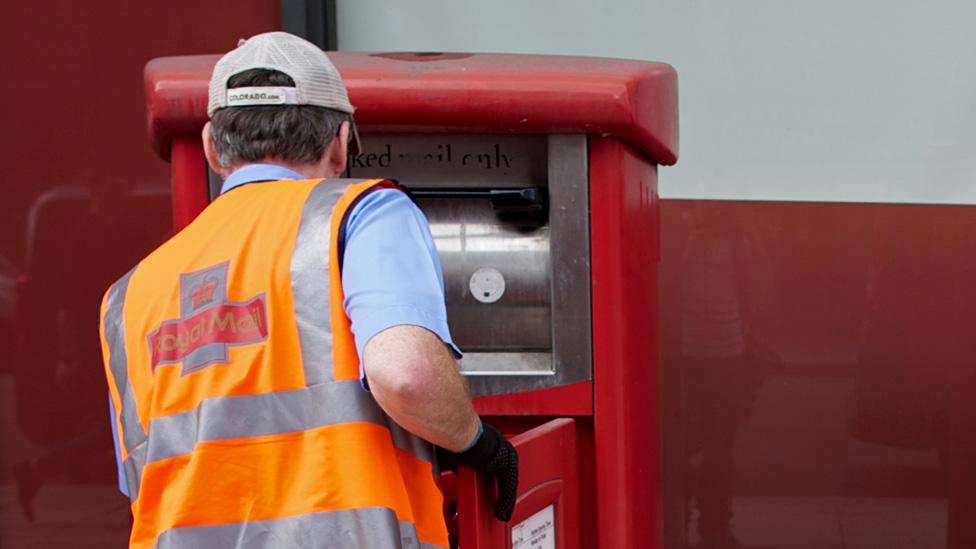Ceredigion: Bid to save last surviving postmen’s huts in Wales
- Published
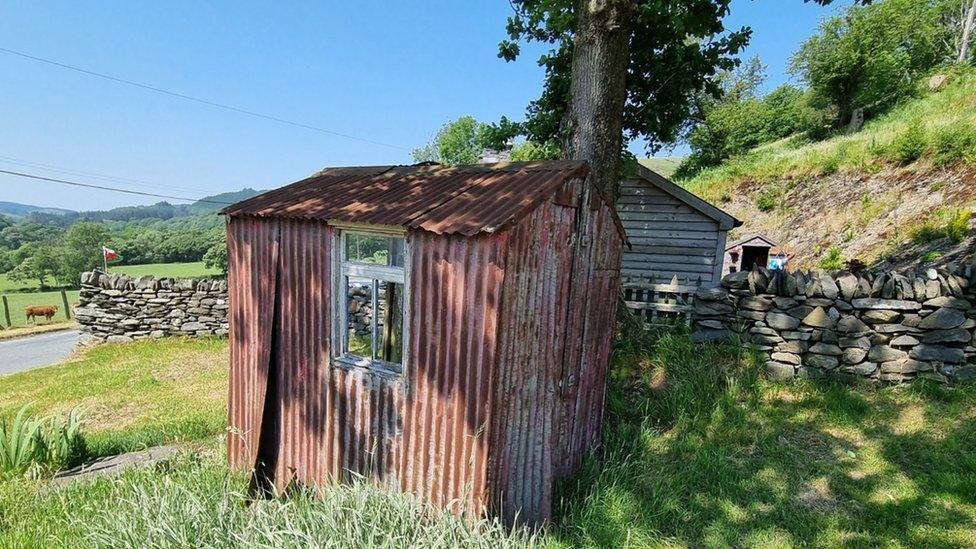
Saved for post...erity: The last remaining postmen's hut in Cwmystwyth, Ceredigion
From the late 19th until the mid-20th century, rural postmen - on foot, horseback or cycling - could often be required to travel 10 to 20 miles on their daily rounds.
In mid and north Wales, as in many other parts of the British countryside, they were provided with "postmen's huts", so that they could rest and feed themselves mid-journey.
Now what was thought to be the last surviving example in Wales, and one of just seven or eight in the UK, has been saved by the community in Cwmystwyth, Ceredigion.
The local history society, Cofnodion Cwmystwyth, or "Cwmystwyth Records", has raised £4,700 to restore the corrugated iron hut and transform it into a visitor attraction.
Brython Davies of the society said that whilst the "glorified garden shed" might not be much to look at, it was a symbol of the way life used to run in a bygone age.
"I was a child in the 1950s, and can remember just what a lifeline the post service was to people living in some of the most remote and isolated parts of the country. You could say it was the internet of its day," he said.
"Come rain or shine, brave young men and women tackled all terrains in order to deliver letters twice a day, and even collect outgoing post from those who didn't have a post box nearby."
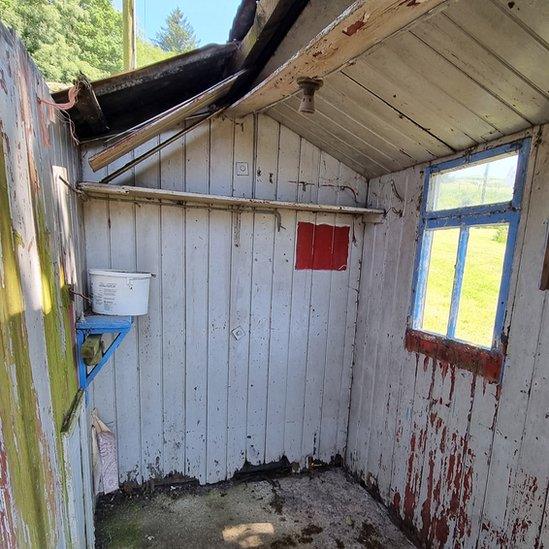
The huts originally included a stove, bench and cupboards, as well as a nearby supply water
Built of a wooden frame with corrugated iron walls, the huts included a potbellied stove for cooking and heating, a bench to relax on, cupboards for storage, and a nearby well to supply water.
He added: "The huts were a vital part of the way in which this well-oiled system used to work, and we felt we needed to preserve it as a part of our rural heritage."
At the time fundraising began, it was thought that this could be the only example remaining in Wales.
However, since BBC Wales started researching it, a second example has since been unearthed in Tregeiriog close to Llangollen.
It was discovered by Marian Morris, who said: "I've cycled past it for years, and always presumed it was just another chicken shed or farm building, but once I read the description on Facebook, I got chatting to friends who knew straight away what it was.
"There's one man in his 90s in our area who I think may well even remember the postmen stopping off there on their rounds."
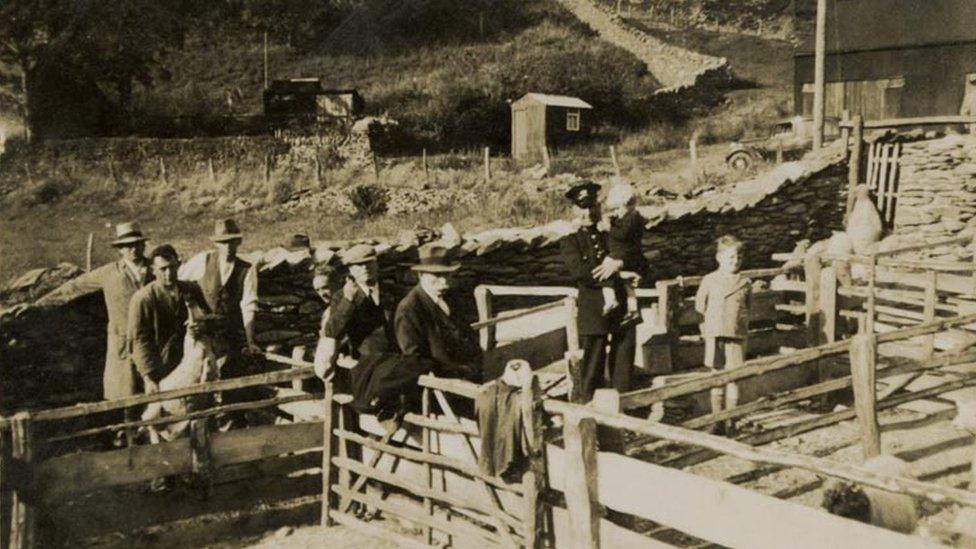
The postmen's hut can be seen in the background of this photo from the 1940s
Retired journalist and postal historian Alan Cleaver hopes Marian's discovery may be the first of many.
"When we started looking into this, I hoped there may be more than we knew of, and possibly now this will start a snowball of people realising just what a history seemingly inconsequential buildings might have had in their local communities," he said.
The Cwmystwyth example has the names of several of the posties carved into the tongue-and-groove internal walls - just one of the features which Mr Davies is determined will be saved in the restoration.
"Every single piece which can be salvaged will be, the engraved names will be cut out of the surrounding rotten timber and set in fresh wood, we can reuse the original window, and much of the interior can be refurbished to look exactly how it would have done when this hut opened in the 1920s or 30s," he added.
"We've bought a genuine postman's bicycle of the correct vintage, and by the time we open to the public we hope to have acquired far more of the paraphernalia which the average post would have carried during their working day."
Mr Cleaver says the huts often provided postmen and women with an additional source of income.
He said: "Frequently, after dropping off the first post they'd have to wait around for several hours to deliver the second, and to empty the post boxes to be sent on vans to the nearest major town to be sorted for the next day's mail.

The huts were used by postmen to make money between deliveries through things like repairing shoes or clocks.
"In this downtime many would use the huts to repair shoes or clocks, etc, or in some instances write novels and poetry."
He said the entire system relied on trust, adding: "Sadly it was a very different time, posties could feel secure in their huts without fear of being robbed, and similarly the public would be content to allow them into their unlocked homes to collect return mail if they were out."
He added that: "The whole operation had to work with military timing and precision, and consequently it ran on very militaristic lines, even down to favouring injured veterans for their staff."
The system of postman's huts endured until the 1960s, when all rural delivery staff were provided with vans.
Mr Cleaver said: "Don't get me wrong, I wouldn't have wanted to ride one of the GPO-issue bicycles, as the vast majority had no gearing, which must have been a nightmare in the hilly Welsh countryside.
"On the face of it the job was made easier. Nevertheless it was a sad time for the relationship between posties and their customers.
"It started to break down those vital connections, and got us to where we are today, where only a privileged few of us are able to name our postman."
Cofnodion Cwmystwyth raised the required funds through a mixture of private donations and a grant to the local community through the Welsh government.
It is the latest in a series of projects which have also seen them set up a history society and archive from their village chapel, and purchase the last remaining red phone box in the area to be repurposed as a miniature garden and photo gallery.
Mr Davies said: "We are blessed to have such a strong community spirit. There might not be many of us, but we all get along famously and pull our weight.
"Projects like this are the only way in which we can keep the history and character of our village alive."
Related topics
- Published1 April 2023

- Published10 May 2020
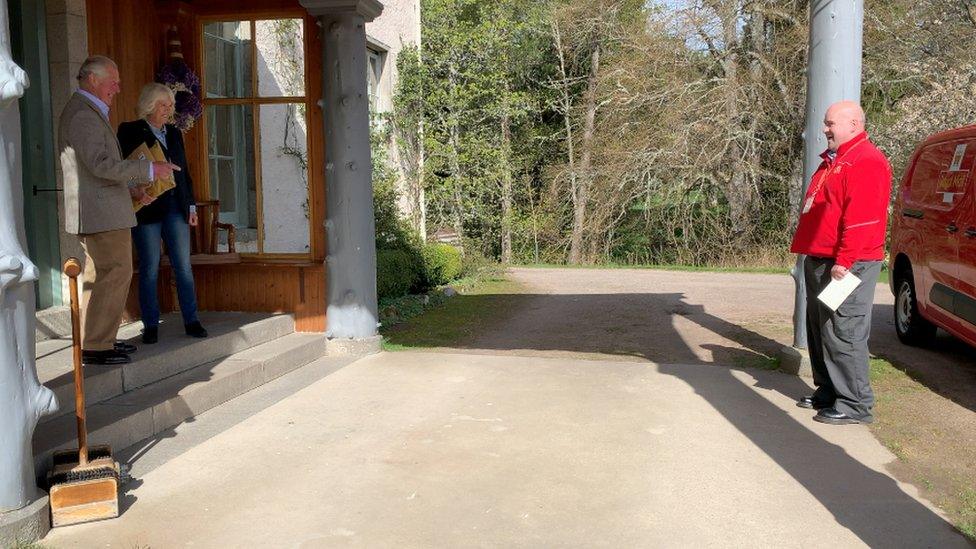
- Published15 May 2023
